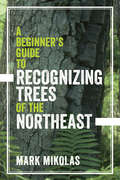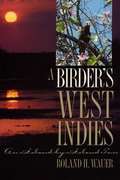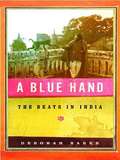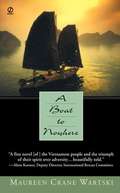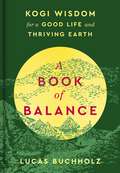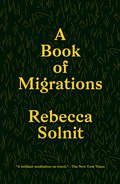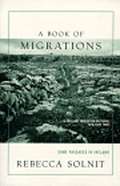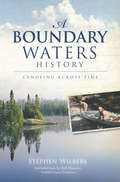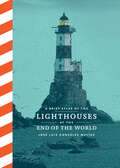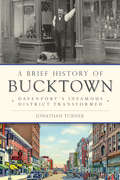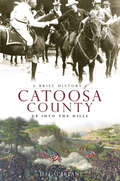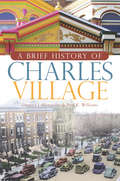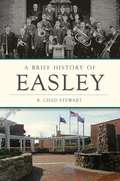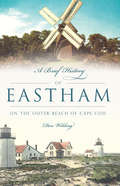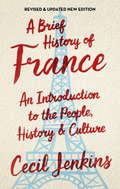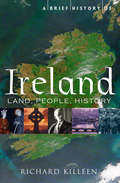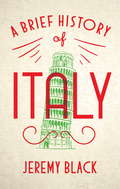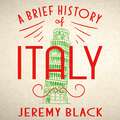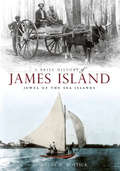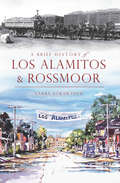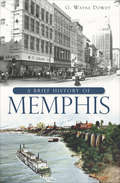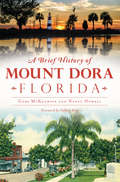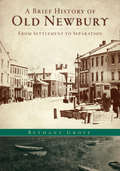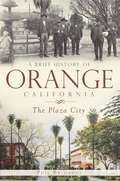- Table View
- List View
A Beginner's Guide to Recognizing Trees of the Northeast
by Mark MikolasIdentify maple, ash, oak, and more with easy-to-learn visual techniques. In this friendly and approachable field guide, writer and avid hiker Mark Mikolas shares a unique approach for year-round tree identification. His method, which centers on the northeastern United States where 20 species make up the majority of trees, will prepare readers to recognize trees at a glance, even in winter when leaves and flowers are not present. Mikolas’s secret is to focus on the key characteristics of each tree—black cherry bark looks like burnt potato chips; beech and oak trees keep their leaves in winter; spruce needles are pointed while balsam fir needles are soft and rounded at the ends. Some trees can even be identified by scent. Location maps for each of the 40 species covered and more than 400 photographs illustrating key characteristics make the trees easy to identify. Mikolas also explains how to differentiate between similar and commonly confused trees, such as red maple and sugar maple. A Beginner’s Guide to Recognizing Trees of the Northeast is a book to keep close at hand wherever trees grow.
A Birder's West Indies: An Island-by-Island Tour
by Roland H. WauerThe West Indies offer so much more than sun, sand, and shopping. This sweeping arc of islands, which runs from Cuba to Grenada and includes the Virgin Islands, teems with a rich diversity of plant and animal life. Up to 40 percent of the plants in some forests are found nowhere else on earth, while the West Indian flyway is a critical link in the migratory routes of many birds. In A Birder's West Indies, Roland Wauer takes you on an island-by-island journey of discovery. He describes the unique natural features of each island and recounts his often fascinating experiences in seeking out the nearly 400 species of birds known in the West Indies. His accounts give insight into the birds' habitats, status, and ecology and record some of the threats posed by human activities. For readers planning trips to the West Indies, Wauer also includes helpful, up-to-date facts about the best times to travel, the kinds of entry and customs systems to expect, the money exchange services available, and general information about weather, food, and accommodations. Filling a unique niche among current guides, A Birder's West Indies offers both professional ornithologists and avocational bird watchers a chance to compare notes and experiences with an expert observer. And for readers who haven't yet visited the islands, Wauer's fluid prose and lovely color photographs will be the next-best thing to being there-and an irresistible invitation to go.
A Blue Hand
by Deborah BakerIn this engrossing new piece of Beat history, Pulitzer Prize finalist Deborah Baker takes us back to the moment when America's edgiest writers looked to India for answers as India looked to the West. It was 1961 when Allen Ginsberg left New York by boat for Bombay, where he hoped to meet poets Gary Snyder and Joanne Kyger. Baker follows Ginsberg and his companions as they travel from ashram to opium den. Exposing an overlooked chapter of the literary past, A Blue Hand will delight all those who continue to cherish the frenzied creativity of the Beats. .
A Boat to Nowhere
by Maureen Crane WartskiKien, Mai and her grandfather take a village fishing boat and sail to another country! They would become boat people, risking the perils of pirates, storms, sickness, and starvation to find a land where they could be free.
A Book of Balance: Kogi Wisdom for a Good Life and Thriving Earth
by Lucas BuchholzWe all need help centering ourselves to serve ourselves and our world. In this small, beautiful book, the Kogi—a remote and ancient tribe in the mountains of Colombia--offer their learnings. They pose nine thought-provoking questions to help us live harmoniously with the earth and in turn find happiness and purpose in every moment.“Just as we are both sitting here and talking, this is how we can live well. All of this you will write in the book.”—Mama Jose Gabriel, a spiritual guide of the Kogi tribe, to author Lucas BuchholzFor centuries, the Kogi have lived in seclusion in Colombia’s remote Sierra Nevadas, known as “the heart of the world.” But in recent years, concerned by the environmental degradation they have experienced in their villages and forests, a few emissaries from the tribe emerged to bring an urgent and loving message to the West—advice on how to live in harmony with the earth.Buchholz was invited to their home to receive and transcribe this message. A Book of Balance takes us on a journey into a startlingly beautiful landscape and into a sacred space: the traditional fireside circle held regularly by the tribe. In this circle, members consider key questions essential to their community.In this slim volume of spiritual introspection, they ask us to share in their practice, posing nine questions that focus our minds and hearts on who we are, who we can become.Throughout we hear the words of the Kogi elders, wisdom that offers revelations, inspiration, and direction for our everyday lives.A beautiful book to own, to share with friends, and discuss in community.
A Book of Migrations
by Rebecca SolnitIn this acclaimed exploration of the culture of others, Rebecca Solnit travels through Ireland, the land of her long-forgotten maternal ancestors. A Book of Migrations portrays in microcosm a history made of great human tides of invasion, colonization, emigration, nomadism and tourism. Enriched by cross-cultural comparisons with the history of the American West, A Book of Migrations carves a new route through Ireland's history, literature and landscape.
A Book of Migrations: Some Passages in Ireland
by Rebecca SolnitTravel and history intermingle in this elegant reflection on identity and memory. In her journey through Ireland, author Rebecca Solnit portrays in microcosm a history made up of great tides of invasion, colonization, emigration, nomadism, and tourism. Her observations carve a new route through Ireland's history, literature, and landscape.
A Boundary Waters History: Canoeing Across Time (Sports History Ser.)
by Stephen Wilbers Bill HansenTeasing out the history of a place celebrated for timelessness--where countless paddle strokes have disappeared into clear waters--requires a sure and attentive hand. Stephen Wilbers's account reaches back to the glaciers that first carved out the Boundary Waters and to the original inhabitants, as well as to generations of wilderness explorers, both past and present. He does so without losing the personal relationship built through a lifetime of pilgrimages (anchored by almost three decades of trips with his father). This story captures the untold broader narrative of the region, as well as a thousand different details sure to be recognized by fellow pilgrims, like the grinding rhythm of a long portage or the loon call that slips into that last moment before sleep.
A Boy and a Jaguar
by Catia Chien Alan RabinowitzAlan loves animals, but the great cat house at the Bronx Zoo makes him sad. Why are they all alone in empty cages? Are they being punished? More than anything, he wants to be their champion--their voice--but he stutters uncontrollably.Except when he talks to animals...Then he is fluent. This real-life story with tender illustrations by Catia Chien explores truths not defined by the spoken word. <br><b>2015 Schneider Family Book Award Winner </b>
A Brief Atlas of Lighthouses at the End of the World
by José Luis González MacíasA unique illustrated exploration of our favorite oceanic beacons and their haunted histories.There is something beautiful and wild in the impossible architecture of lighthouses. These precariously perched structures have been the homes and workplaces of keepers whose romantic guardianship has saved countless lives from cruel seas. While that way of life may have faded away, as the lights go out and the buildings crumble, we still have their stories.This collection of more than thirty tales spans the heights and depths of human experience: the blind lighthouse keeper tending a light in the Arctic Circle, the intrepid young woman saving ships from wreck beginning at just age twelve, the desperate plight of a crew cut off for forty days with meager supplies, the lighthouse haunted by the clacking sound of a long-passed keeper’s ghostly typewriter.Interweaving literary inspiration and elements from Jules Verne, Virginia Woolf, and Edgar Allan Poe and accompanied by beautiful illustrations, nautical charts, maps, architectural plans, and curious facts, these illuminating stories will transport the reader in a book as full of wonder as the far-flung lighthouses themselves.QUIRKY STORIES AND A LITERARY APPROACH: Fascinating stories and anecdotes about each lighthouse include such features as notable inhabitants (Virginia Woolf), tantalizing on-site discoveries (Edgar Allen Poe’s unfinished writings), and weird twists, such as a never-before-seen species made extinct by a lighthouse keeper’s cat (Tibbles).UNIQUELY ILLUSTRATED: The gorgeous pointillistic full-page illustrations, equally beautiful location maps, and detailed building diagrams make this a distinctive celebration of these fascinating structures and their places in the world.AN ARMCHAIR TOUR OF LIGHTHOUSES AROUND THE WORLD: The thirty+ stunning lighthouses featured include:Adziogol Lighthouse: Rybalche, Kherson Oblast (Ukraine)Amédée Lighthouse: Amédée, Nouméa, New Caledonia (France)Bell Rock Lighthouse: Inchcape Rock, Arbroath, Scotland (UK)Buda Lighthouse: Buda Island, San Jaime de Enveija, Tarragona (Spain)Eddystone Lighthouse: Eddystone Rocks, Rame Head, Plymouth (UK)Evangelistas Lighthouse: Evangelistas Islets, Natales, Última Esperanza (Chile)Great Isaac Cay Lighthouse: Great Isaac Cay, Bimini Islands (Bahamas)Grip Lighthouse: Grip, Kristiansund, Nordmøre, Møre og Romsdal (Norway)Guardafui Lighthouse: Cape Guardafui, Bari, Puntland (Somalia)Klein Curaçao Lighthouse: Klein Curaçao, Curaçao (Netherlands)Lime Rock Lighthouse: Lime Rock, Newport, Rhode Island (USA)Maatsuyker Lighthouse: Maatsuyker Island, Tasmania (Australia)Robben Island Lighthouse: Robben Island, Cape Town (South Africa)Rocher aux Oiseaux Lighthouse: Rocher aux Oiseaux (Bird Rock), Madeleine Islands, Quebec (Canada)Rubjerg Knude Lighthouse: Rubjerg, Hjørring, Jutland (Denmark)San Juan de Salvamento Lighthouse: Isla de los Estados, Patagonia (Argentina)Smalls Lighthouse: Smalls Rocks, Marloes, Pembrokeshire, Wales (UK)Stephens Island Lighthouse: Takapourewa or Stephens Island, Marlborough (New Zealand)Svyatonossky Lighthouse: Svyatoy Nos, Múrmansk Oblast (Russia)Wenwei Zhou Lighthouse: Wenwei Zhou or Gap Rock, Wanshan Archipelago, Hong Kong (China)Perfect for:Readers of quirky historyFans of nautical talesCoastal residents and visitorsArmchair travelersAnyone who has ever dreamed of life as a lighthouse keeperGift giving for Father's Day, Mother's Day, birthday, graduation, or housewarming
A Brief History of Bucktown: Davenport's Infamous District Transformed (Brief History)
by Jonathan TurnerGerman immigrants created leafy beer gardens here nearly two centuries ago, establishing Bucktown as the heart of entertainment in downtown Davenport for generations. In 1916, the founding of the Tri-City Symphony Orchestra at the Burtis Opera House embodied the neighborhood's reputation for high culture. The numerous saloons and theaters, as well as the forty-two documented brothels that flourished within two blocks, lent a bawdy side to the good times. Varied industries thrived through World War II, and downtown bustled with shoppers visiting department stores like Petersen's. Later, the neighborhood struggled and declined as a farming crisis hit the region hard. With revitalized landmarks like the magnificent Hotel Blackhawk and the historic Redstone Building, the community is growing more vibrant as a place to live, work and play. Author Jonathan Turner explores this dynamic history and transformation.
A Brief History of Catoosa County: Up Into the Hills (Brief History)
by Jeff O'BryantCatoosa County's rich history touches upon many of thedefining events and social changes of America's past. As settlers expanded westward, Georgia forcibly removed Native Americans from the boundaries of what would eventually form Catoosa, a Cherokee name that the settlers adopted as their own. As the site of the second most costly battle in the Civil War, Chickamauga set the stage for much that followedin Catoosa's history, from the end of a three-thousand-year-old mode of warfare to the beginnings of women's service in the military. Though nearly one million people visit Chickamauga and Chattanooga National Military Park each year seeking to understand and connect to the Civil War struggle, many remain unaware of the larger part Catoosa played in the unfolding drama of America. Join local historian Jeff O'Bryant as he brings this valuable heritage to light.
A Brief History of Charles Village
by Paul K. Williams Gregory J. AlexanderBaltimore Orioles, infamous bootleggers, novelists of the Jazz Age and famous musicians have all wandered and lived among the stately Victorian homes and vibrant "painted ladies" of Charles Village. From its beginning as a series of country villas for the wealthy elite of Baltimore to escape the crush of downtown, the neighborhood has become a diverse and vibrant cultural hub of the city. Local authors Gregory J. Alexander and Paul K. Williams chart the evolution of this famous Baltimore community and its institutions while telling fascinating tales of some of its most colorful residents.
A Brief History of Easley (Brief History)
by R. Chad StewartEasley has a rare combination of a quaint Main Street and a thriving industrial presence. The city was a series of small farms and open land until residents convinced officials to make the area a stop along the Atlanta and Richmond Air-Line Railroad after the Civil War. Access to the railroad and the popularity of cotton spurred an era of rapid growth and expansion, culminating in the dominance of the textile industry throughout most of the twentieth century. While cotton drove textiles in the area, advances in agriculture and manufacturing brought dozens of companies, placing Easley at the center of the state’s biggest industrial area. Author Chad Stewart details the history of a city that moved from sleepy train stop to vibrant South Carolina city.
A Brief History of Eastham: On the Outer Beach of Cape Cod (Brief History)
by Don WildingFirst known as Nauset, Eastham once reached across the eastern half of Cape Cod from Bass River to the tip of what is now Provincetown. The area was home to the Nauset tribe for thousands of years before exploration by Champlain and the Pilgrims, and it is now known as the “Gateway to the Cape Cod National Seashore.” Whether it’s the U.S. Life-Saving Service and its shipwreck rescues, Cape Cod’s oldest windmill or tales of sea captains and rumrunners, Eastham is truly rich in history and tradition. Author Don Wilding wanders back in time through the Outer Cape’s back roads, sand dunes and solitary beaches to uncover Eastham’s fascinating past.
A Brief History of France, Revised and Updated (Brief Histories)
by Cecil JenkinsWhen we think of France, we tend think of fine food and wine, the elegant boulevards of Paris or the chic beaches of St Tropez. Yet, as the largest country in Europe, France is home to extraordinary diversity. The idea of 'Frenchness' emerged through 2,000 years of history and it is this riveting story, from the Roman conquest of Gaul to the present day, that Cecil Jenkins tells: of the forging of this great nation through its significant people and events and and its fascinating culture. As he unfolds this narrative, Jenkins shows why the French began to see themselves as so different from the rest of Europe, but also why, today, the French face the same problems with regard to identity as so many other European nations.
A Brief History of Ireland (Brief Histories)
by Richard KilleenFrom the dawn of history to the decline of the Celtic Tiger - how Ireland has been shaped over the centuries.Ireland has been shaped by many things over the centuries: geography, war, the fight for liberty. A Brief History of Ireland is the perfect introduction to this exceptional place, its people and its culture.Ireland has been home to successive groups of settlers - Celts, Vikings, Normans, Anglo-Scots, Huguenots. It has imported huge ideas, none bigger than Christianity which it then re-exported to Europe after the fall of the Roman Empire. In the Tudor era it became the first colony of the developing English Empire. Its fraught and sometimes brutal relationship with England has dominated its modern history. Killeen argues that religion was decisive in all this: Ireland remained substantially Catholic, setting it at odds with the larger island culturally, religiously and politically. But its own culture and identity have stayed strong, most obviously in literature with a magnificent tradition of writing from the Book of Kells to the modern masters: Joyce, Yeats, Beckett and Heaney.
A Brief History of Italy: Indispensable for Travellers
by Jeremy Black'Jeremy Black skilfully sketches social, cultural and political trends' - Christina Hardyment, Times audiobook of the week'A remarkable mixture of cold history, wide culture and personal experience'Ciro Paoletti, Secretary General of the Italian Commission of Military HistoryDespite the Roman Empire's famous 500-year reign over Europe, parts of Africa and the Middle East, Italy does not have the same long national history as states such as France or England. Divided for much of its history, Italy's regions have been, at various times, parts of bigger, often antagonistic empires, notably those of Spain and Austria. In addition, its challenging and varied terrain made consolidation of political control all the more difficult. This concise history covers, in very readable fashion, the formative events in Italy's past from the rise of Rome, through a unified country in thrall to fascism in the first half of the twentieth century right up to today. The birthplace of the Renaissance and the place where the Baroque was born, Italy has always been a hotbed of culture. Within modern Italy country there is fierce regional pride in the cultures and identities that mark out Tuscany, Rome, Sicily and Venice to name just a few of Italy's many famous regions. Jeremy Black draws on the diaries, memoirs and letters of historic travellers to Italy to gain insight into the passions of its people, first chronologically then regionally. In telling Italy's story, Black examines what it is that has given Italians such cultural clout - from food and drink, music and fashion, to art and architecture - and explores the causes and effects of political events, and the divisions that still exist today.
A Brief History of Italy: Indispensable for Travellers
by Jeremy Black'Jeremy Black skilfully sketches social, cultural and political trends' - Christina Hardyment, Times audiobook of the week'A remarkable mixture of cold history, wide culture and personal experience'Ciro Paoletti, Secretary General of the Italian Commission of Military HistoryDespite the Roman Empire's famous 500-year reign over Europe, parts of Africa and the Middle East, Italy does not have the same long national history as states such as France or England. Divided for much of its history, Italy's regions have been, at various times, parts of bigger, often antagonistic empires, notably those of Spain and Austria. In addition, its challenging and varied terrain made consolidation of political control all the more difficult. This concise history covers, in very readable fashion, the formative events in Italy's past from the rise of Rome, through a unified country in thrall to fascism in the first half of the twentieth century right up to today. The birthplace of the Renaissance and the place where the Baroque was born, Italy has always been a hotbed of culture. Within modern Italy country there is fierce regional pride in the cultures and identities that mark out Tuscany, Rome, Sicily and Venice to name just a few of Italy's many famous regions. Jeremy Black draws on the diaries, memoirs and letters of historic travellers to Italy to gain insight into the passions of its people, first chronologically then regionally. In telling Italy's story, Black examines what it is that has given Italians such cultural clout - from food and drink, music and fashion, to art and architecture - and explores the causes and effects of political events, and the divisions that still exist today.
A Brief History of James Island: Jewel of the Sea Islands (Brief History)
by Douglas W. BostickIn this engaging volume, local historian Douglas Bostick reveals the unacknowledged history of the second community in South Carolina, settled in 1671. Whether investigating prehistoric clues about Native American life before European settlement, detailing the history of agriculture and the reign of King Cotton, following armies from multiple wars or chronicling the triumph of equality on the greens of Charleston's Municipal Golf Course, Bostick tells the story of James Island as only a native son can. Join Bostick as he brings this small jewel of an island out of Charleston's shadow and into the light of its own rich, historic assets.
A Brief History of Los Alamitos-Rossmoor
by Larry StrawtherThe city of Los Alamitos and the contiguous, unincorporated community of Rossmoor exemplify small-town America amid the populous western Orange County sprawl. Their tree-lined streets, well-kept homes and first-rate schools are reflected in Rossmoor's selection as the No. 1 suburb in California (and No. 9 nationwide) in a 2012 study by Coldwell Banker Realty. The evolution of Los Alamitos from cattle ranches and sugar beet factory town to World War II military town and ultimately into residential neighborhoods took a century. Meanwhile, the planned "walled 'city' of Rossmoor" was created between 1955 and 1961. Despite annexation talk, Rossmoor and "Los Al" coexist apart together, so to speak, on Long Beach's outskirts. Author Larry Strawther traces the histories of these interdependent sister communities, which epitomize the reality in the legend of the Orange County lifestyle.
A Brief History of Memphis (Brief History Ser.)
by G. Wayne DowdyThe story of Memphis, Tennessee—from raucous river town to major Southern metropolis—with photos included. No other southern city has a history quite like Memphis. First purchased in the early 1800s from natives to serve as a vital port for the emerging American river trade, the city flourished until the tumultuous years of the Civil War brought chaos and uncertainty. Yet the city survived. Through the triumphs and tragedies of the civil rights movement and beyond, Memphis endured it all. Despite its compelling story, no concise history of this home of soulful music and unmistakable flavor is available to modern readers. Thankfully, local historian and Memphis archivist G. Wayne Dowdy has filled this gap with a history of Memphis that is as vibrant and welcoming as the city itself.
A Brief History of Mount Dora, Florida (Brief History)
by Nancy Howell Gary MckechnieMount Dora is known for its southern charm and New England look, yet its history is just as engaging. The "Festival City" began with the arrival of pioneer families such as the Drawdys, Simpsons and Tremains. In the 1880s, it became a popular destination for Chautauqua events, when visitors gathered beside Lake Gertrude and Lake Dora for educational and cultural enrichment. In the twentieth century, Mount Dora weathered economic setbacks and racial conflict before becoming a premier city of the arts. Today, this beautiful lakefront community welcomes thousands of visitors to its numerous festivals, events and active shopping village. Join authors Gary McKechnie and Nancy Howell as they celebrate the intriguing history of their town.
A Brief History of Old Newbury: From Settlement to Separation
by Bethany GroffIn the first ten years of its settlement, the town of Newburywitnessed murders, kidnappings, earthquakes and a plague of caterpillars. The century that followed--marked by religious conflict, Indian uprisings and public scandal--proved no less challenging to the early Puritan community.In 1640, Massachusetts Governor John Winthrop noted, "Aspeople increased, so sin abounded." But through the turmoil, Newbury's citizens harnessed the region's abundant natural resources and developed a thriving community. Author Bethany Groff introduces the compelling personalities that shaped the history of Old Newbury up until 1764, when Newburyport received its independence from the mother town. From the scandalous exploits of Dr. Henry Greenland to the courageous and sacrificing acts of founding families like the Emerys, Dummers and Pikes, A Brief History of Old Newbury provides a captivating glimpse into the verve of thisearly New England town.
A Brief History of Orange, California: The Plaza City
by Phil BrigandiOrange, California, a city that started small, but grew big on the promise, sweat and toil of agriculture. Born from the breakup of the old Rancho Santiago de Santa Ana, its early days were filled with horse races, gambling, and fiestas. Citrus was the backbone of the economy for more than half a century, though post-war development eventually replaced the orange groves. Historian, and Orange native, Phil Brigandi traces the roots of the city back to its small town origins: the steam whistle of the Peanut Roaster, the citrus packers tissue-wrapping oranges for transport, Miss Orange leading the May Festival parade, and the students of Orange Union High painting the O and celebrating Dutch-Irish Days. In doing so, he captures what makes Orange distinct.
